1928
Julio Le Parc, the second son of a working-class family (his father had jobs on the railroad), was born on September 23 in the city of Mendoza, at the foot of the Andes mountains, some 700 miles west of Buenos Aires, the capital of Argentina. He spent his childhood and went to elementary school in Mendoza and Palmira; he had a talent for drawing, and made illustrated maps and portraits of illustrious men. At 13 he began to work at odd jobs, sometimes delivering newspapers, sometimes as an assistant to a bicycle repairman, sometimes in a small factory making crates for shipping fruit.
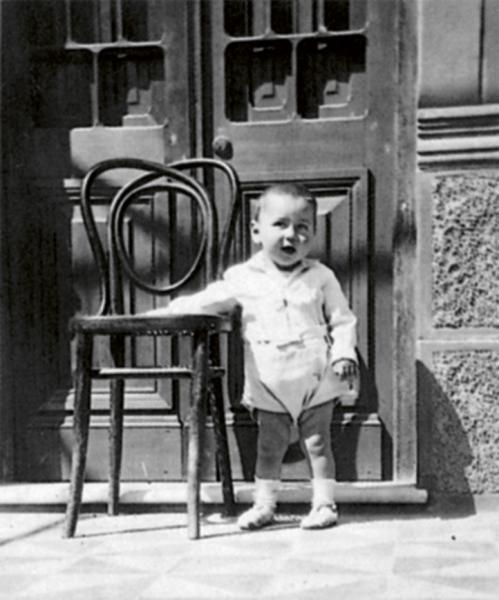 Julio Le Parc, A l'âge d'un an, Mendoza, 1929
Julio Le Parc, A l'âge d'un an, Mendoza, 1929 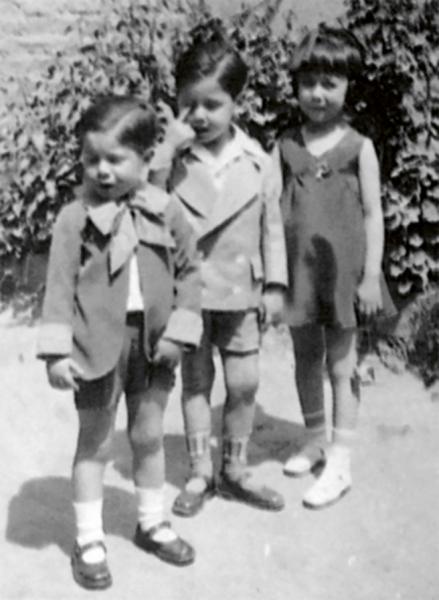 Julio Le Parc avec son frère et sa soeur, Mendoza, 1933
Julio Le Parc avec son frère et sa soeur, Mendoza, 1933 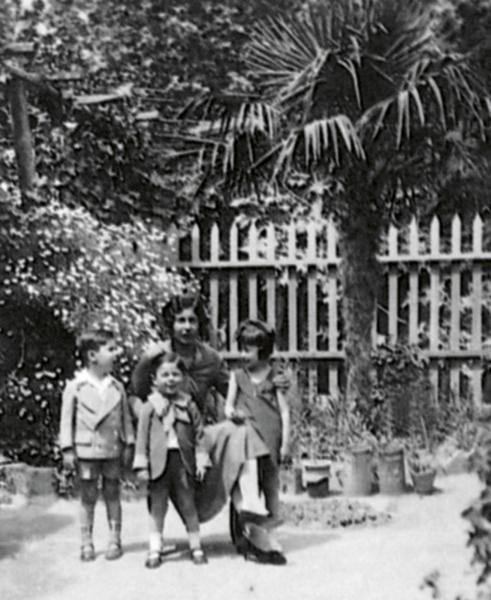 Julio Le Parc, avec sa mère, sa soeur et son frère, Mendoza, 1933
Julio Le Parc, avec sa mère, sa soeur et son frère, Mendoza, 1933 1942
Le Parc moved with his mother and siblings to Buenos Aires. While working as an apprentice in a leather-goods factory, he prepared at night for the entrance exam to the Escuela Preparatoria de Bellas Artes.
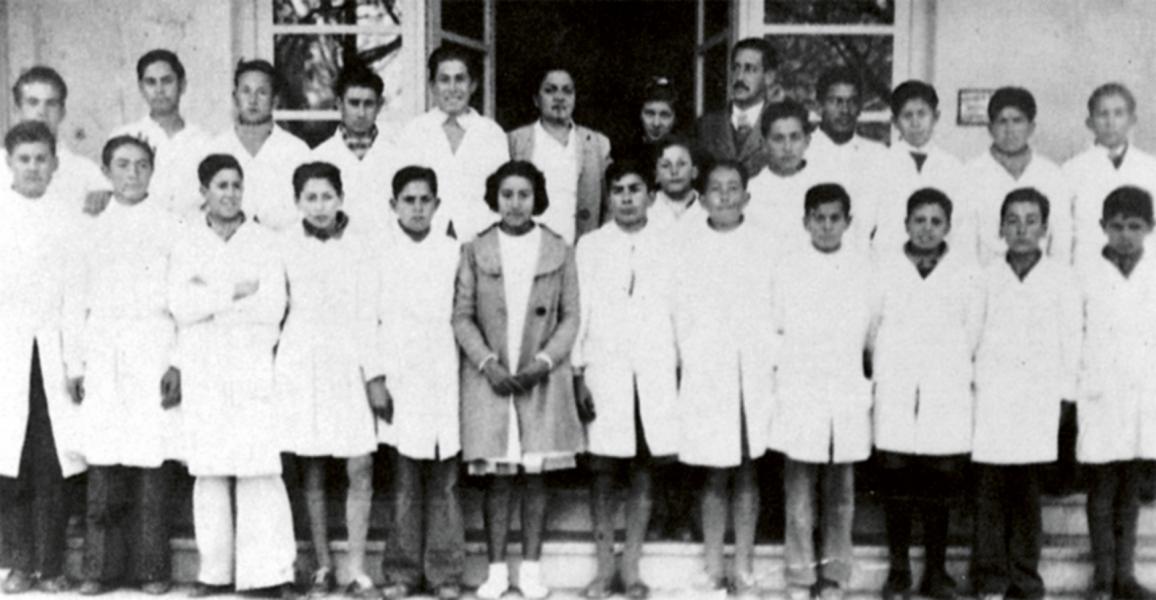 Ecole primaire, Palmira, Mendoza, 1943
Ecole primaire, Palmira, Mendoza, 1943 1943-1946
Escuela de Bellas Artes, night school. During the day he worked in the leather-goods factory, later in a bookstore, and later still in a metallurgical factory. First experiences with the student movement at the Escuela: rallies, demands, etc. Le Parc became interested in Argentina’s avant-garde artistic movements: the Arte Concreto-Invención movement, the Spazialismo movement inspired by Lucio Fontana, one of his professors at the Escuela de Bellas Artes.
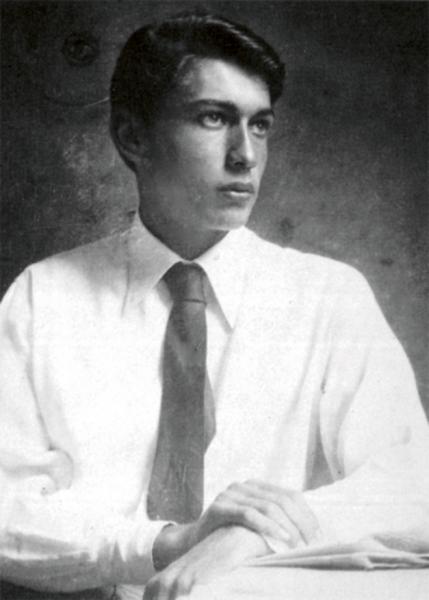 Julio Le Parc, Buenos Aires, 1946
Julio Le Parc, Buenos Aires, 1946 1947-1953
After four and a half years of studies but with two and a half years yet to go before obtaining his diploma, Le Parc left the Escuela de Bellas Artes. It was a confused, general rejection of submissiveness and obedience. He also left his job and broke with his family. He lived a bit on the margins, hanging out with anarchists and Marxists, trying to analyze his problems from a different angle. Hitchhiking, almost penniless, he traveled throughout the interior of the country.
1954
Conscious of his marginal existence, he reintegrated himself into society, got a job as a doorman at a state-sponsored theater, entered an independent experimental theater group, took an exam for free tuition at the Escuela Superior de Bellas Artes, a post-secondary academy. He was rejected at first, then admitted.
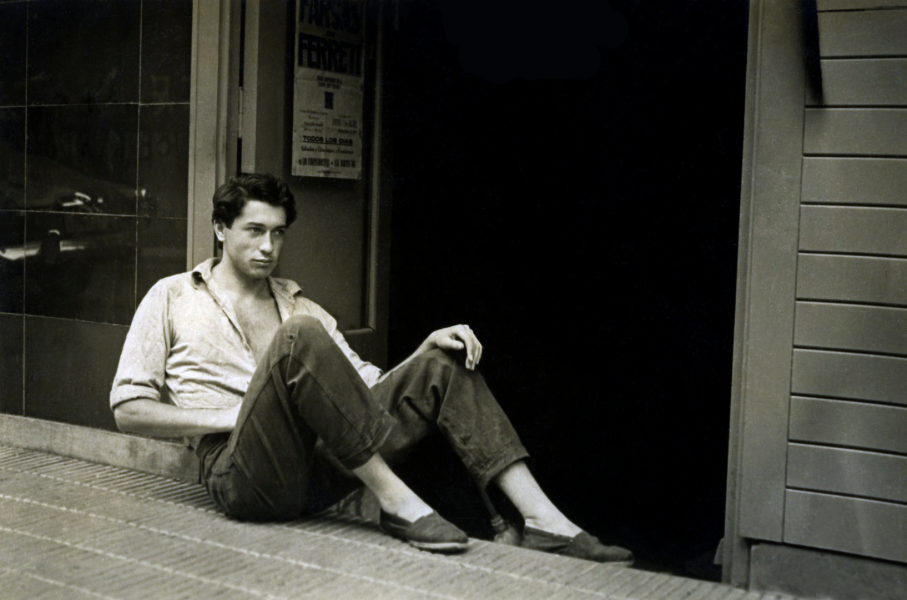 Julio Le Parc, Théâtre des Indépendants, 1954
Julio Le Parc, Théâtre des Indépendants, 1954 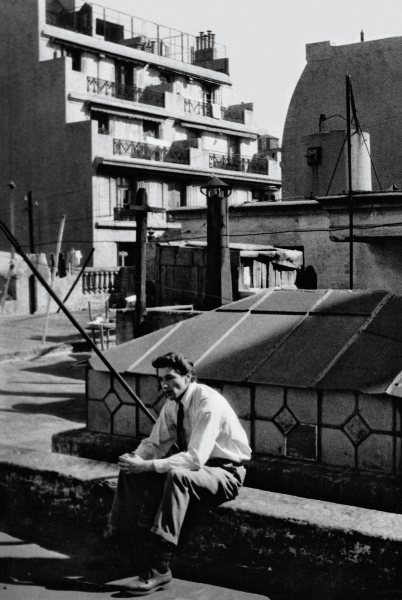 Julio Le Parc, Buenos Aires, 1954
Julio Le Parc, Buenos Aires, 1954 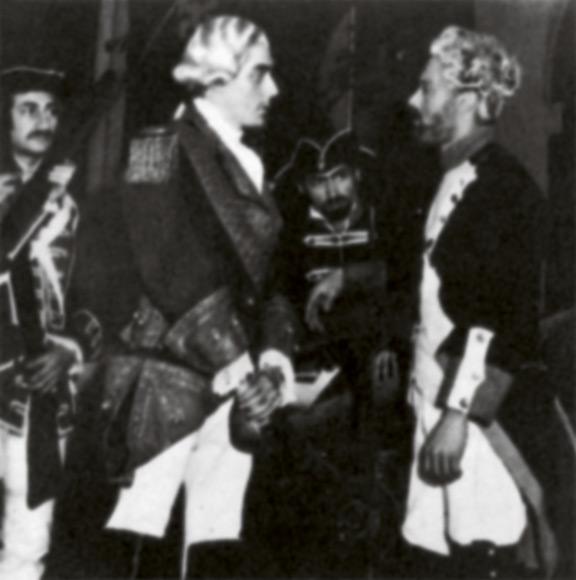 Théâtre des Indépendants, pièce de théâtre, Buenos Aires, 1954
Théâtre des Indépendants, pièce de théâtre, Buenos Aires, 1954 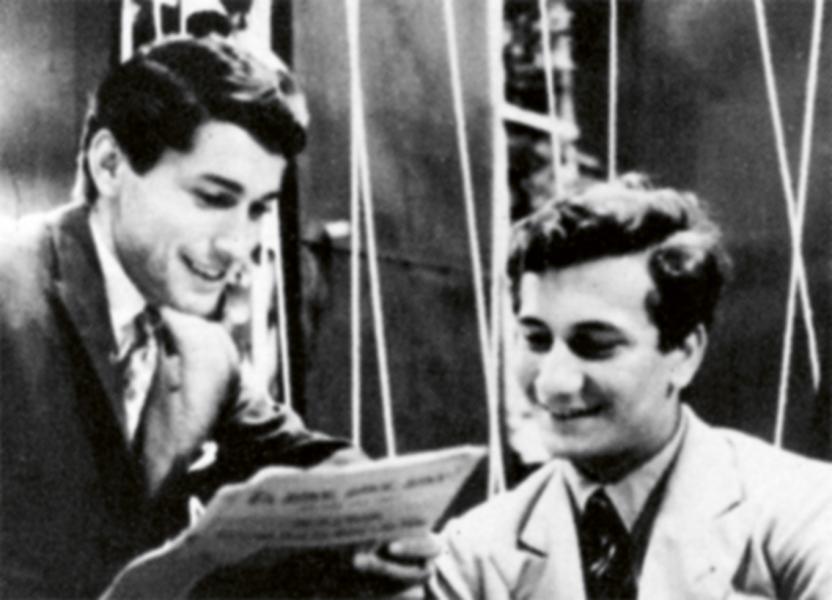 Au théâtre des Indépendants, 1954
Au théâtre des Indépendants, 1954 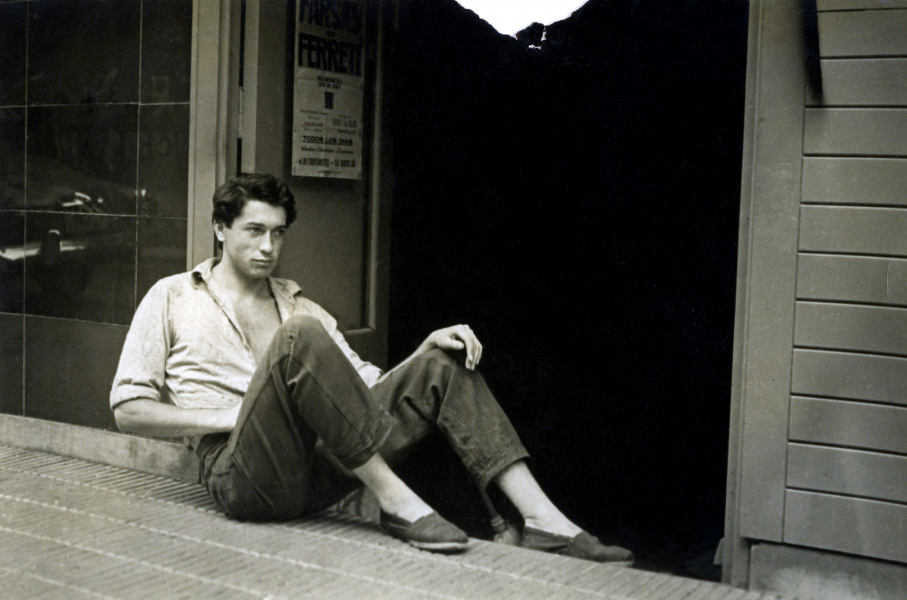 Julio Le Parc devant le théâtre des Indépendants, Buenos Aires, 1954
Julio Le Parc devant le théâtre des Indépendants, Buenos Aires, 19541955
He returned to the fine arts academy. Student movements in which he actively took part. Numerous rallies, occupation of three fine art schools, during which the directors were unseated. The students took charge of the administration of the schools; abolished the disciplinary codes; classified professors as good, bad, or undesirable; practiced an open-door policy; proposed new study plans; called upon the young avant-garde artists; organized demonstrations in the street; got arrested, etc. He met Martha.
1958
Le Parc and a group of friends analyzed their problems as future “artists,” and that was the seed of his journey to Paris, the center of the art world, where he intended to break the dependence that tied him down and see with his own eyes what was actually produced there, not the distorted reflections he had seen in Buenos Aires. He entered a contest and won a fellowship from the French Cultural Service, allowing him to depart for Paris, where he arrived on November 4, 1958. Francisco Sobrino arrived shortly afterward, and later, other artist friends.
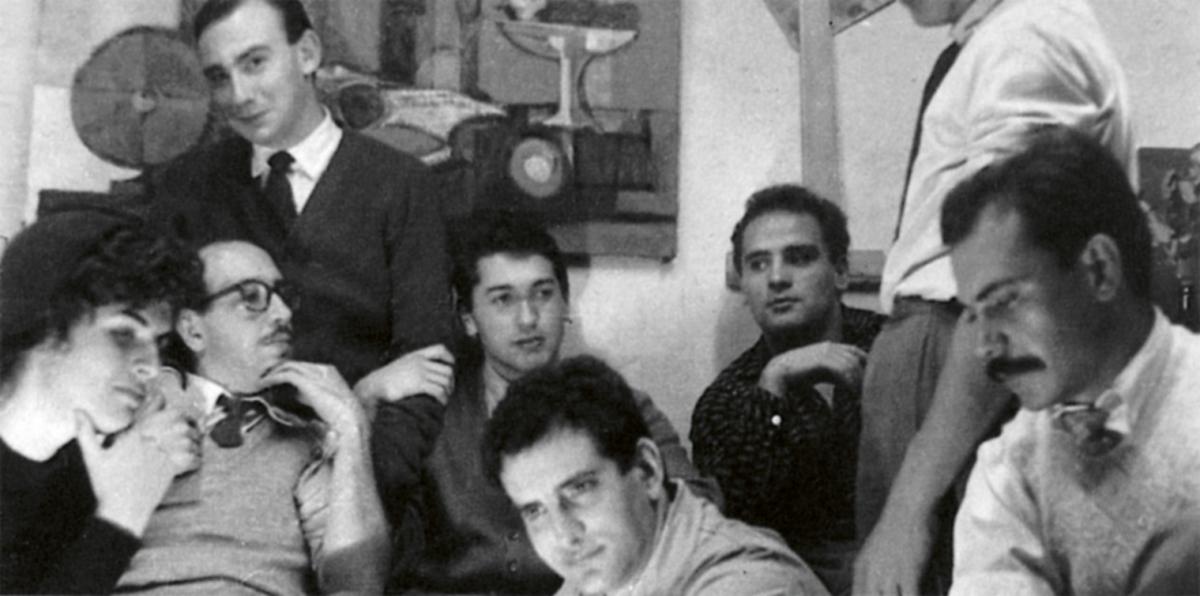 Avec Ana-Maria Godet, Garcia Rossi, Demarco, Sobrino, Moyana à Buenos Aires 1957
Avec Ana-Maria Godet, Garcia Rossi, Demarco, Sobrino, Moyana à Buenos Aires 1957 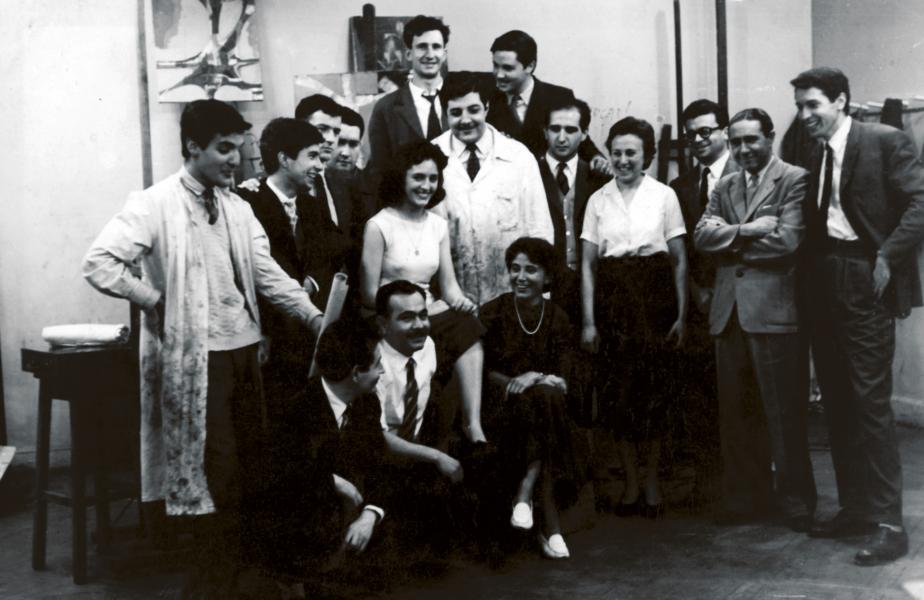 Académie, Buenos Aires, 1958
Académie, Buenos Aires, 1958 1959
 Biennale de Paris, 1959
Biennale de Paris, 1959 1960
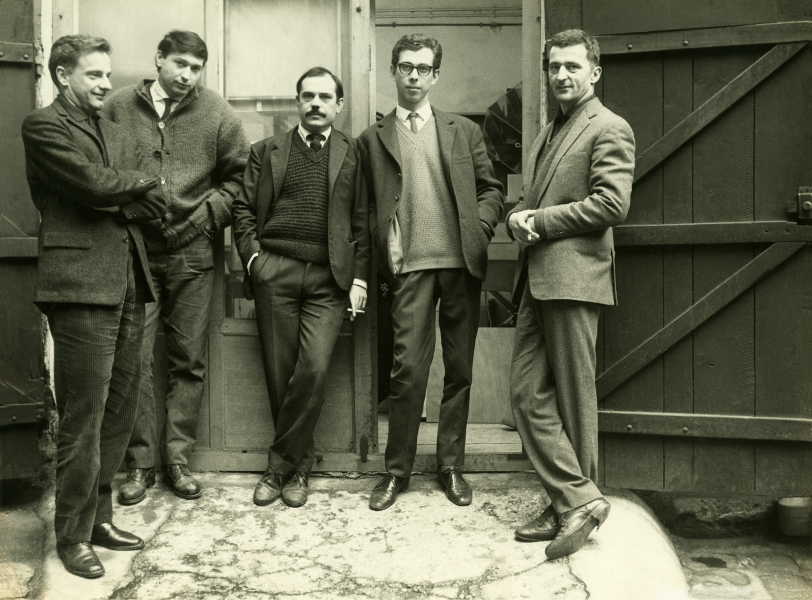 GRAV : Morellet, Le Parc, Sobrino, Yvaral, Stein, Paris 1960
GRAV : Morellet, Le Parc, Sobrino, Yvaral, Stein, Paris 1960  Naissance de Juancito, 1960
Naissance de Juancito, 1960 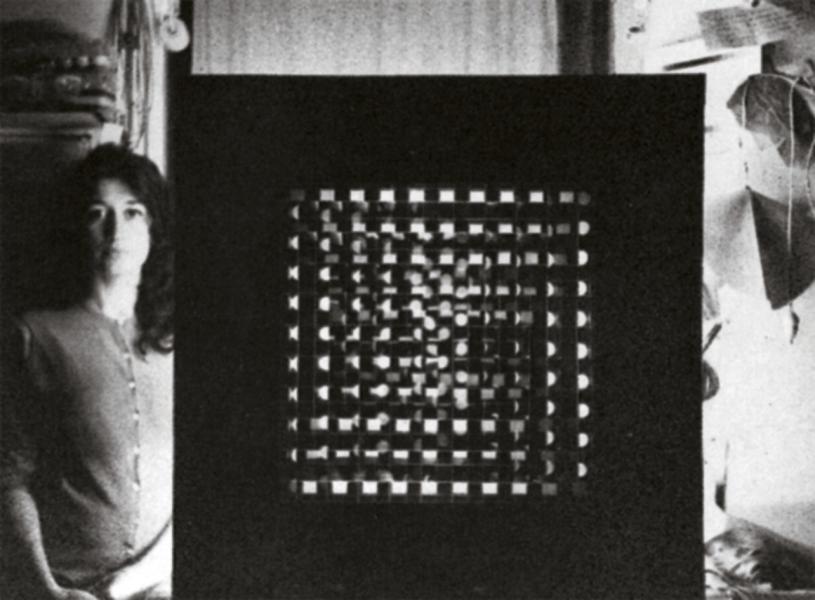 Martha, rue Garancière, Paris, 1960
Martha, rue Garancière, Paris, 1960  Atelier du GRAV, rue Beautreillis, Paris, 1960
Atelier du GRAV, rue Beautreillis, Paris, 1960 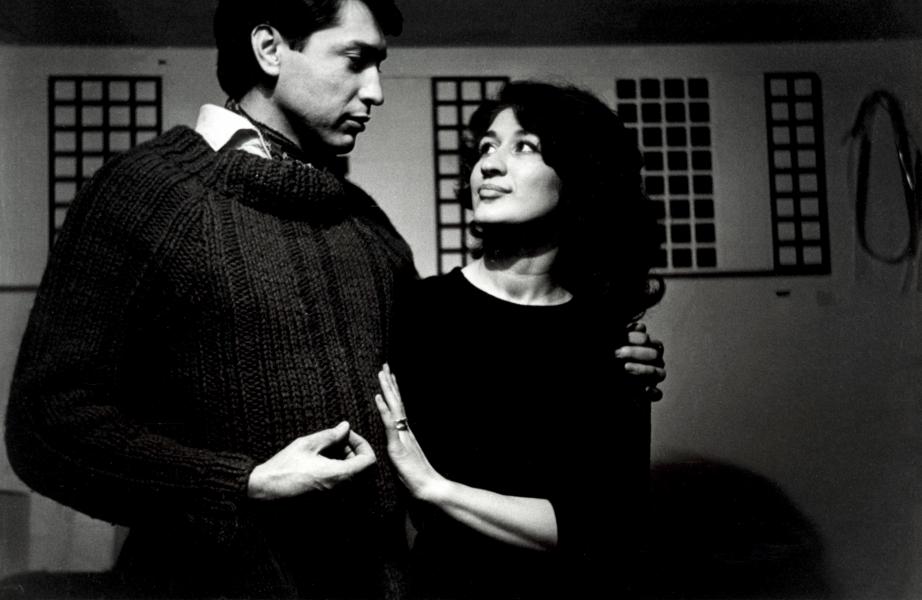 Julio et Martha Le Parc, Paris, 1960.
Julio et Martha Le Parc, Paris, 1960.